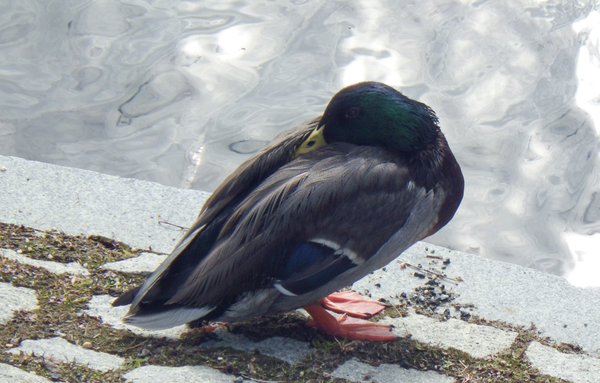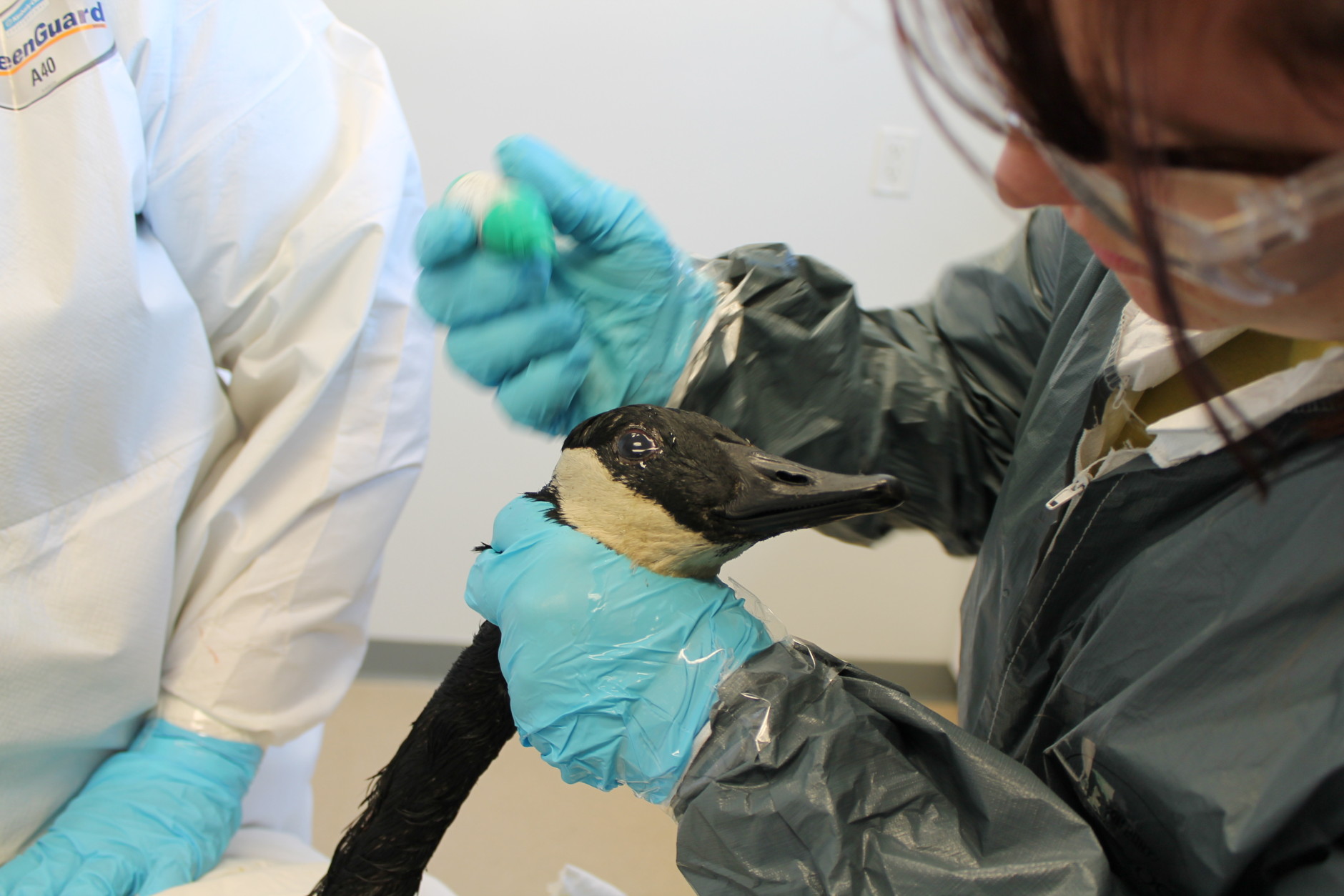
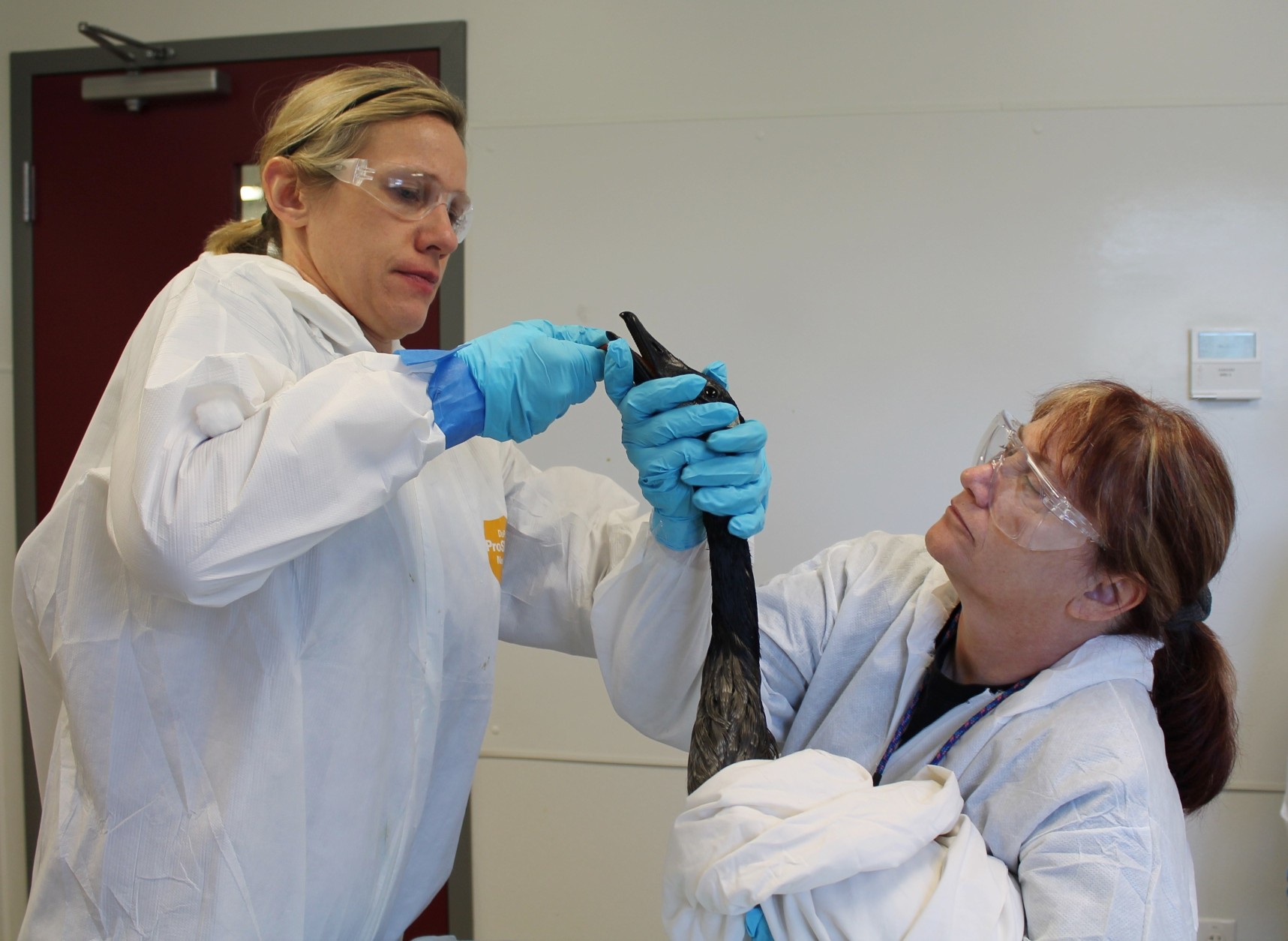
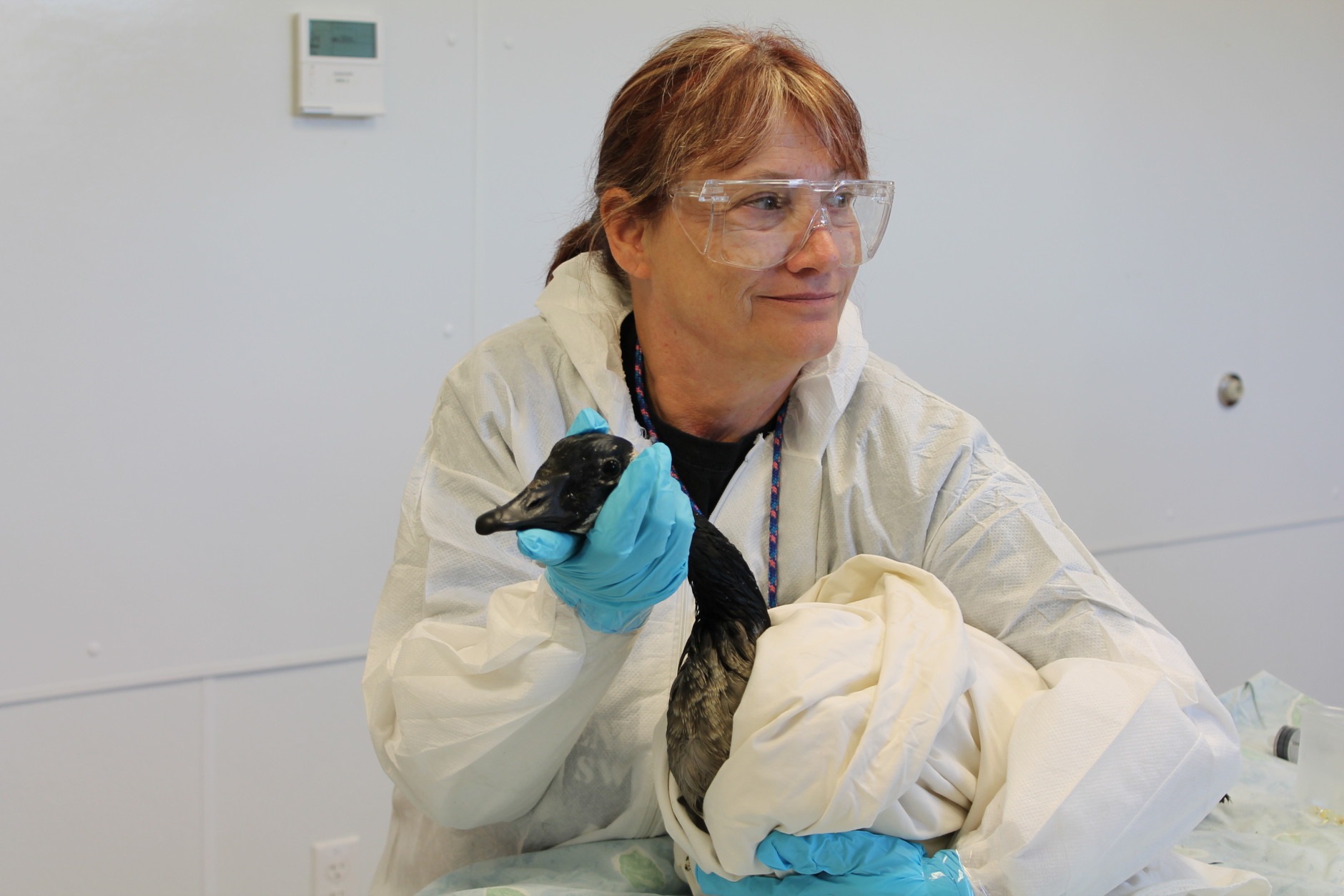
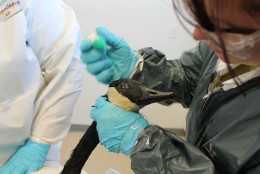

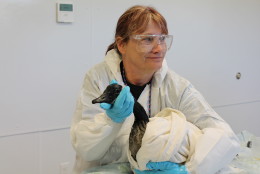
WASHINGTON – They were discovered huddled together near an oily containment zone on the Potomac River. Now 16 Canadian geese are being cleaned and restored to health in Delaware.
Activated by the U.S. Coast Guard, Tri State Bird Rescue out of Newark, Delaware collected the birds covered in the unidentified oily substance.
“They’re very social birds, but when they are injured or when they’re oiled, they do tend to kind of hunker down and try to stay out of sight,” says Lisa Smith, director of Tri State Bird Rescue.
The birds were transported to the cleaning facility in Delaware on Friday afternoon and were stabilized after a physical exam.
“They’ll get oral or IV fluids that have been warmed up. We want to get calories and fluids into them so that they are stabilized and feeling better because the wash process is very stressful,” Smith says.
Since they don’t know exactly what is on the birds, Smith says the team does what’s called a feather test. A few breast feathers are gently plucked from an affected bird to test in basins full of different concentrations of detergent to determine how heavy the contaminant is.
The multiple bin wash process takes about 30 to 45 minutes for each bird, Smith says and is nothing like the Dawn commercials on TV.
“They are not comfortable being held by humans. They do not find our presence soothing at all. They do not understand we’re trying to help them, so we try to make it quick but as efficient as possible. Our goal is to put them through this wash process just once,” she says.
As for the birds’ health so far, Smith says it’s a waiting game.
“It’s really hard to tell because they can look like they’re doing well in the first day or two,” Smith says. “Before you know the hypothermia catches up with them later.”


